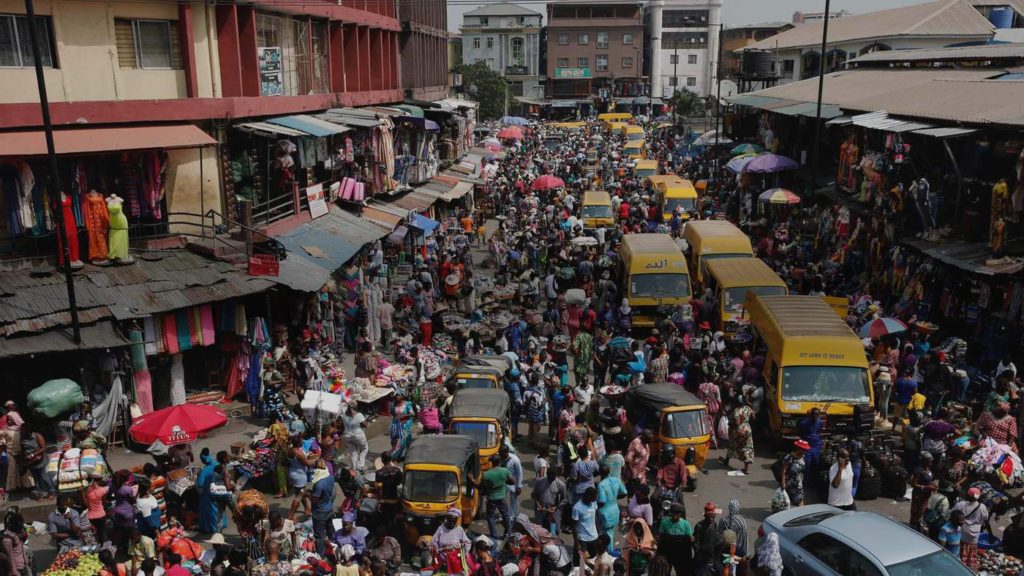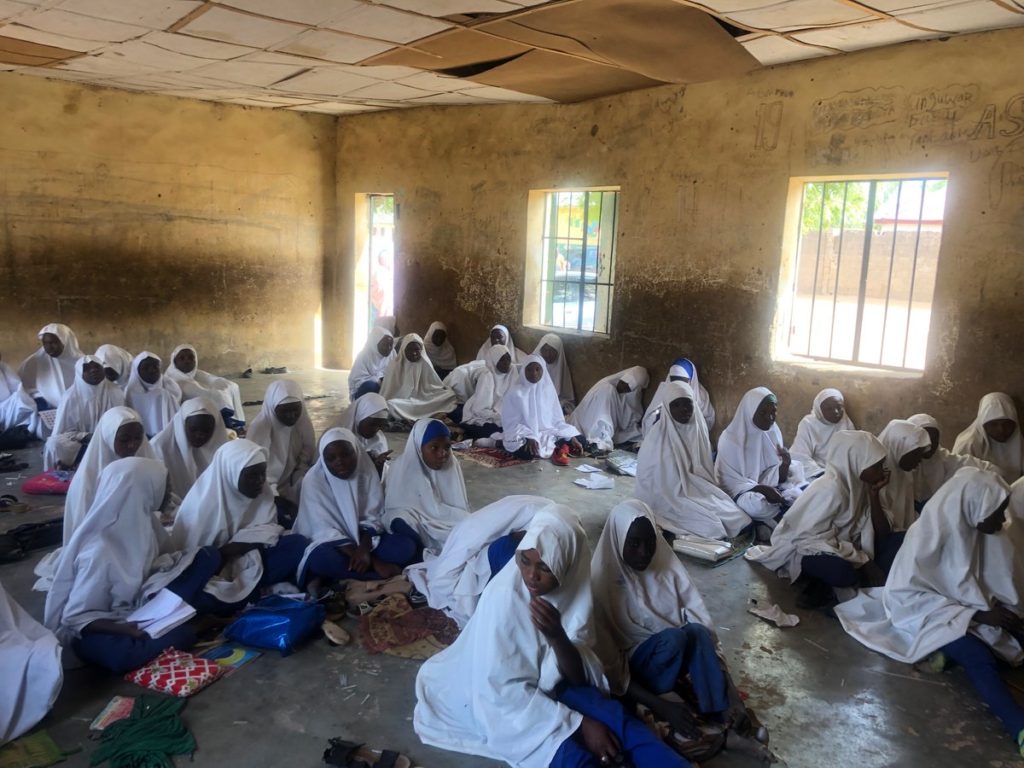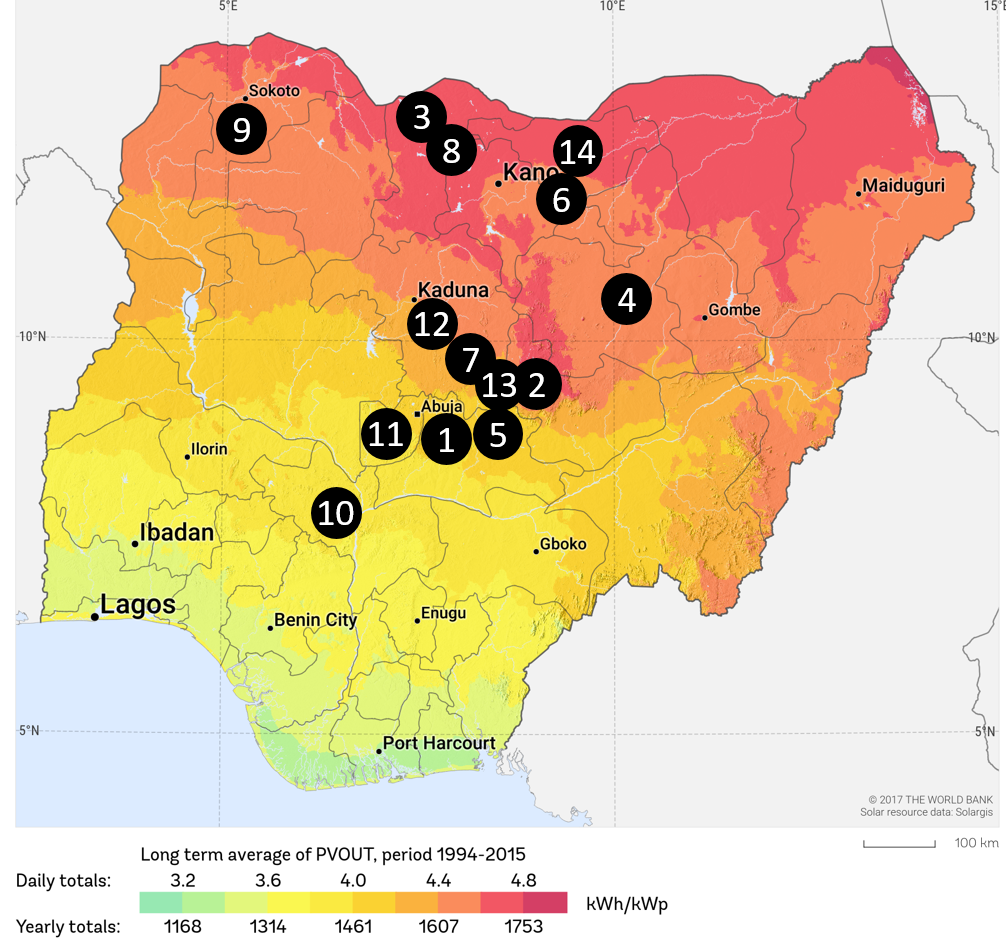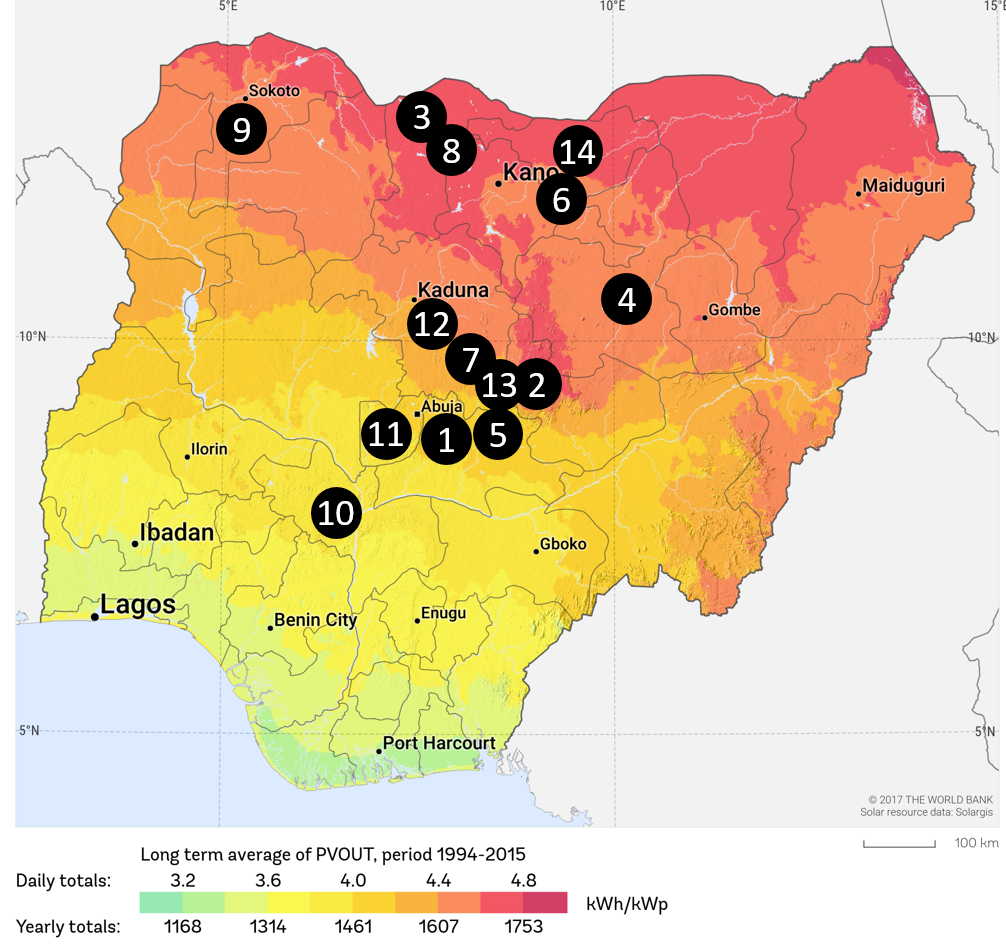Building political will for policy change: the role of CSOs in Nigeria
The presence/extent of political will is a key determinant of the success or failure of policies. It is captured by the capability of political actors to achieve the implementation of policies which they prescribed or supported. Political will can be verbally expressed, observed through institutional changes, or demonstrated by budgetary commitments by state actors (Shiffman, 2007; Fox, Goldberg, Gore & Barnighausen, 2011).+ Importantly, the application of political will in achieving policy change usually involves other stakeholders, beyond state actors. Thus, the success in policymaking really depends on a complex interplay of varying degrees of interests, motivations, and beliefs; competencies and skills; coordination abilities and strategic decision-making; among many others.
In societies with huge governance and institutional deficits, political will can play an active role in navigating the challenges to achieve the desirable policy goal/change. However, political will has been generally weak in most societies in Africa, where several constraining factors limit the ability to genuinely move for policy change. In the absence of strong political will, the influence of non-state actors in providing policy support for social and political change becomes critical. In particular, Civil Society Organisations (CSOs) and Trade Associations have been the driving force behind some of the policy decisions in Africa. These non-state actors are generally abreast of the issues the general public faces, and therefore they can mobilise action around issues that protect the interest of citizens.
So while the state bears the ultimate responsibility for effecting policy change, non-state actors may trigger political will, or support an existing one. The likelihood of political will effecting policy change(s) can well depend on the role played by these non-state actors. Following some tenets of Brinkerhoff and Kulibaba’s (1999) conceptual framework for political will for anti-corruption reforms, this piece highlights two indicators of political will: the locus of the initiative and the mobilisation of stakeholders. + It throws light on two separate instances where the influence of non-state actors can drive the build-up of political will for policy change – in tobacco taxes, and trade policies in Nigeria.
Tax increase on tobacco products
Tobacco use has been long proven to be hazardous to the health of both primary and secondary consumers. Governments across the world have made several efforts to curb the use of tobacco through measures such as taxation, publicising the dangers of tobacco smoking, banning use in public spaces, among others. While measures such as these are typically government-driven, non-state actors can play notable roles in shaping their design, implementation, and evaluation. Usually, the loci of initiative of tobacco control measures are government ministries, particularly the Health and Finance ones (see Danishevski et al., 2008; Tam and Walbeek, 2014; and Hoe et al., 2016).+ However, in Nigeria, the recent tobacco control legislation was mainly driven by CSOs, particularly the Nigerian Tobacco Control Alliance (NTCA) – the umbrella organisation dedicated to tobacco control in Nigeria.
NTCA consists of domestic civil society groups, research organisations, Community-Based Organisations (CBOs), Faith-Based Organisations (FBOs), international organisations and professionals, and their activities are mostly donor funded – by Bloomberg Philanthropies and Campaign for Tobacco Free Kids (CTFK). The Alliance mobilised diverse stakeholders and was able to effect the tobacco policy change by harnessing the respective competencies of the members – mostly through evidence-based research, advocacy, and awareness creation. This section provides chronological narrative of the key activities/events that led to the tobacco tax policy change.
As the targeted policy change was to increase excise taxes, evidence-based research became critical in the tobacco control campaign of the Alliance. A report by the Nigerian Tobacco Research Group (NTRG) revealed the tobacco industry was targeting children with promotions, advertisements and the sale of tobacco products around schools as part of their marketing strategy. With such evidence, and the increasing momentum towards tobacco control across the globe, the Alliance became more motivated to explore ways to discourage both tobacco consumption and initiation of use. This coincided with a period when the Nigerian government, particularly the Ministry of Finance, was exploring alternative sources of non-oil revenue. Taxation, which has been proven to be the most effective control measure, became the focus. The Alliance then reached out to the Centre for the Study of the Economies of Africa (CSEA), which had conducted a study on tobacco tax simulations, to join the group in order to provide the much-needed evidence to inform their advocacy efforts.
The Alliance was notably vibrant in their advocacy for the tax increment, and were able to achieve buy-ins from the relevant stakeholders and the public. Reports, articles, and press releases highlighting the growing dominance of the tobacco industry in Nigeria, as well as their marketing strategies were released to the public. In addition, the Alliance educated the public in general and young people in particular on the dangers associated with tobacco use and second-hand smoking. It was revealed that tobacco use kills more than 7 million people globally each year, and developing countries like Nigeria will contribute 80 percent of these deaths by 2030 (World Bank, 2019).+ Furthermore, the potential impacts of substantial increments in tobacco tax on public health and the government revenue base were made known to the wider public.
As the momentum for reduced tobacco consumption and higher government revenue was building, a workshop of the Technical Working Group on Tobacco Control became the critical platform for the push for an increase in excise taxes on tobacco products. The workshop gathered policymakers and tobacco taxation experts from relevant government ministries and agencies including the Ministry of Health, Ministry of Finance, Ministry of Budget and Planning, and the Federal Inland Revenue Service; as well as from ECOWAS, CSOs, research institutes, and the media. The group noted that there were huge shortfalls in the tax rate at the time when compared to the WHO-recommended excise tax burden of 70 percent, and stressed the need for stronger tobacco control laws. They deliberated on the appropriate excise tax that would reduce tobacco consumption on one hand, and increase government revenue on the other (Win-Win), using evidence from tobacco tax simulations presented by research organisations.
Four months after the workshop, the Nigerian government announced a new tax policy for tobacco products and alcohol beverages. While the new policy maintains the current 20 percent ad valorem-based excise duty rate on tobacco products, it introduces an additional N58 (US$ 0.19) specific tax on a pack of cigarettes which will be implemented over three years (N20 in 2018; N20 in 2019; and N18 in 2020). Although the increment puts the excise tax burden at 16.4 percent, which is still way below the WHO-recommended excise tax burden of 70 percent, it signifies a major milestone in the campaign against tobacco use – a notable success.
Opting out of the EU-West Africa EPA
In April 2014, the Nigerian government opted out of the EU-West Africa Economic Partnership Agreement (EPA) which comprises of the 15 ECOWAS states and Mauritania. The EU-West Africa EPA aims to facilitate free trade, greater regional integration, and economic development while, protecting infant industries in West Africa. The economic anchor of the Agreement is the immediate removal of 100 percent of the custom duties for West African goods entering into European Union member states, and the gradual removal of up to 75 percent of tariff lines for products from EU into West Africa. It is noteworthy to mention that most West African countries including Nigeria participated in the trade negotiations for about ten years, but Nigeria opted out after the negotiations had been finalised.
The Nigerian government opted out of signing the EPA for the principal reason that the CSOs, particularly trade unions, were not in support of the EPA. At the 2016 Plenary of the European Union Parliament in Strasbourg, France, President Buhari stated that “…the Manufacturers Association of Nigeria (MAN) and Associated Trade Unions, raised concerns over the negative impact of the EPAs on Nigeria’s industrialisation programme”. + The concerns centred around the potential negative impact of the EPA on the country’s revenue base and balance of payment position, noting that the influx of goods into the Nigerian market at a significantly reduced tariff would lead to losses in government revenue and increased imports. The Manufacturers Association of Nigeria (MAN) which represents about 2,000 private and public companies, as well as the National Association of Nigerian Traders (NANTS), built the momentum against the Agreement by effectively mobilising stakeholders to provide evidence-based analyses, lobby key interest parties, and organise various media campaigns.
The core of the analyses is that on one hand, Nigeria will not benefit from the EPA, as the majority (95 percent) of its exports to the EU is oil and gas which is not subject to import duty; and that local manufacturers have limited capacity to produce and export industrial goods to the EU. On the other hand, EU countries will import cheaper finished products thereby rendering the existing manufacturing industries uncompetitive, and hindering the country’s ongoing industrialisation programme. As a result, Nigeria will continue to be an importer of processed goods, an exporter of unprocessed raw materials, and will suffer revenue losses. The coalition of organised private sector groups led by MAN, estimated that the revenue losses due to the tariff removal will amount to US$1.3 trillion.
In an attempt to legitimise their stance, MAN enlisted the support of prominent national and international figures and provided them the platform to engage with other stakeholders. At the 2015 general meeting of MAN, Thabo Mbeki, South Africa’s former president, highlighted that signing the EPA had negative implications on the economies of African countries. Similarly, at the 2017 general meeting of MAN, Benjamin Mkapa, Tanzania’s former president stated that the Agreement is counterproductive. Nigeria’s former Minister of State for Finance, Ambassador Bashir Yuguda, in a discussion with MAN advised the government to reconsider its position towards the EPA.
The position of Nigeria’s organised private sector as well as the views of the prominent individuals were repeatedly published in major newspapers including The Guardian, Punch, Leadership and Thisday. Particularly, NANTS ran a periodic publication on EPA-related issues in its Regional Trade Advocacy Series in one of Nigeria’s major newspapers – the Vanguard. Interviews with CSO groups were also aired on leading TV channels and radio stations such as the Nigerian Television Authority (NTA), African Independent Television (AIT), and Cool FM.
These aforementioned activities of MAN and NANTS resulted in a general disapproval of the EPA among industrialists and the working class. With the use of evidence-based studies, support from prominent individuals, and widespread dissemination activities, the civil society provided a clear and extensive review of the implications of signing the EPA, and narrowed the government’s options towards rejecting the Agreement.
Tying the two instances together
The two instances presents some notable parallels that can explain how political will for policy change can be built, as well as the critical role of CSOs. In both cases, the composition of the Alliance or coalition was a key determinant of the successful outcome. The size and diversity of the Alliance improved the collective capacity of the group in making their claims, exerting influence, and achieving their overall aim. The inclusion of a wide array of actors such as CSOs, research organisations, and international partners in the NTCA brought together champions that could spearhead the group’s agenda; experts to provide evidence-based analyses, and donors to fund the group’s activities. Similarly, the large size of MAN (over 2,000 members) provided clout for the favourable results.
Despite the fact that both groups possessed a strong drive towards a specific policy stance, their motives seemed to have differed considerably. While the position of NTCA seemed to be driven by genuine disapproval for incessant tobacco use and the negative health implications, the agitation from MAN and NANTS was largely driven by their fear of competition from imported goods if the EPA was signed. Thus the NTCA were mostly anti-tobacco advocates aiming for a tobacco-free society, while MAN and NANTS were essentially trying to protect themselves from potentially harmful competition.
In both cases, the use of credible evidence that was able to demonstrate the magnitude of improvement in public health in the case of tobacco taxation, and the public revenue losses in the case of the EPA, played a critical role as a tool to drive the advocacy efforts. CSEA, a partner of the NTCA, conducted a study on tobacco tax simulations which showed that increments in line with the WHO-recommended tobacco tax rate would result in substantial improvements in public health and government revenue. Likewise, research by the MAN-led coalition concluded that the revenue losses to the government as a result of signing the EPA would be significant. However, the robustness of both evidence differs slightly. While the tobacco tax simulation model was detailed and robust, and has been applied in several countries, the limited information on how MAN arrived at the size of revenue losses makes the quality of the evidence debatable.+
The advocacy and outreach mechanisms in both cases were similar. The choice of media channels was strategic, and dissemination activities were persistent. Leading newspapers, TV stations and radio channels were utilised on a regular basis to share pertinent information. The ability to use diverse media outlets to push their agenda and share the progress was instrumental in capturing the interest and the support of the public as well as highly-placed individuals. In addition, organising round table discussions were instrumental in keeping members of the alliance informed on recent events and future activities.
In sum, although there is no silver bullet in the approaches to building political will for policy change, these two instances have highlighted the importance of CSOs in building a strong and competent coalition, leveraging on evidence-based analyses, and undertaking rigorous dissemination activities in achieving successful outcomes.
This article was first published for On Think Tanks

 English
English
 Arab
Arab
 Deutsch
Deutsch
 Português
Português
 China
China








 This Memo was drafted in collaboration with
This Memo was drafted in collaboration with